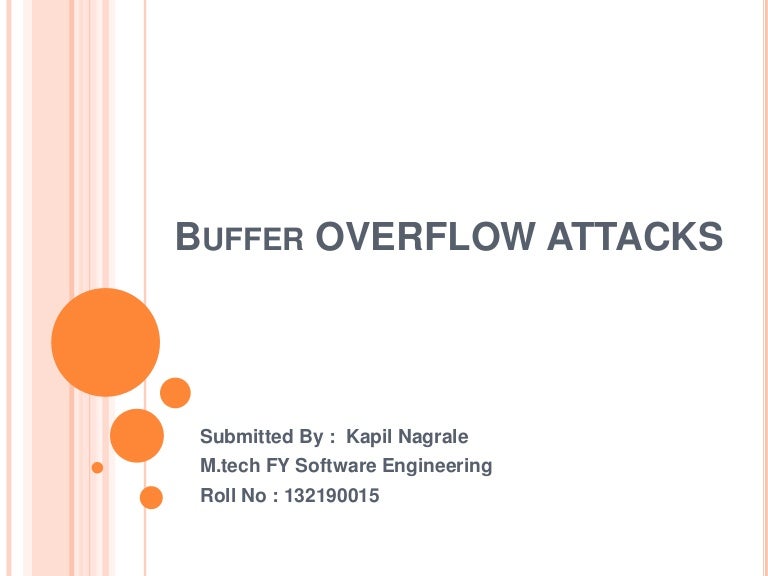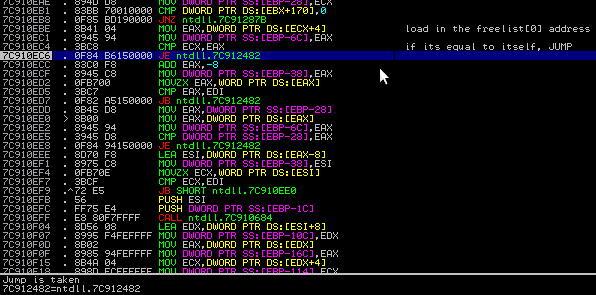

They report when at least one control path causing an overflow is found. The corresponding Polyspace Bug Finder checkers, Array access out of bounds and Pointer access out of bounds, look for such issues, too.
Buffer overflow attack code#
Polyspace Code Prover can identify that the variable length is not bounded along all paths. Buffer overflow from incorrect string format specifier: When you use functions such as sscanf, your string format specifier indicates a string size greater than the storage area allocated for the string.Destination buffer overflow in string manipulation: You use string manipulation functions such as sprintf() and write strings that are too large for the buffer that you are writing to.Ĭhar *fmt_string = "This is a very long string, it does not fit in the buffer".* Inermediate code where no check on num is done */ Array access with tainted index: You can obtain a variable from an external source and use it as array index without checking if the value is less than array size.Pointer access out of bounds: You can use a pointer assigned to a block of memory to access memory beyond that block.Printf("The 10-th Fibonacci number is %i. Array access out of bounds: You can use an index to go beyond the size of the array.Polyspace Bug Finder, through its various checkers, provides extensive support for detecting and avoiding stack-based buffer overflows. You also have the MISRA C:2012 Directive 4.14 that states, “The validity of values received from external sources shall be checked.”
Buffer overflow attack software#
This early and quick feedback enables the development teams to address such issues before they propagate further downstream into the software builds, saving testing and debugging resources.įor example, if you are following a security standard such as CWE or CERT C, you can use Polyspace Bug Finder to adhere to the rules. The following CWE IDs, CERT C rules, and ISO 17961 secure coding guidelines handle buffer overflows: Polyspace Bug Finder provides various checkers that not only identify buffer overflow issues, but also other potential constructs that can lead to and exploit a buffer overflow vulnerability. Polyspace Bug Finder™ applies fast formal methods to enable developers to comply with coding guidelines, which helps avoid buffer overflows. This approach is in alignment with the requirements of the software development workflow. Polyspace ® products take a two-step approach to address this challenge. However, this is an insufficient approach since safety- and security-critical systems cannot afford to have any false negatives (i.e., a missed instance of a buffer overflow) in the deployed embedded software. There is a plethora of static analysis tools that claim to check for buffer overflows, and they do so using different heuristics or some form of data flow analysis. How Can You Use Polyspace Static Analysis to Avoid Buffer Overflows? And that is precisely what Polyspace static analysis does. An issue as subtle as this can be detected only if you can keep track of all execution paths in the program. In other words, a subset of execution paths exists where, despite the check, a buffer overflow can occur. The second check on the variable length is not performed at all. The if block preceding the else if block performs an unrelated check on png_ptr->mode if that previous check fails, control goes outside the if - else if chain with just a warning. However, the snag here is that the check occurs in an else if block.

Is exactly what is needed to avoid a buffer overflow when you use length. If your program has sufficient privileges, this malicious code can take control of your application and lead to exploitation. An attacker can overflow your buffer precisely enough so that your program, instead of returning to the call site, jumps to the location of malicious code. This address is compromised because of the buffer overflow. The call stack also stores the address that the program jumps to when the called function returns.


You can encounter the corrupted value causing a run-time error elsewhere in your code. The variable value is corrupted because of the buffer overflow. Area adjacent to the overflowing buffer stores another local variable or a function parameter.When you call a function in your code, all data relevant to the call are stored in adjacent regions on the call stack. The severity of a buffer overflow depends on what is stored in the adjacent memory regions.


 0 kommentar(er)
0 kommentar(er)
